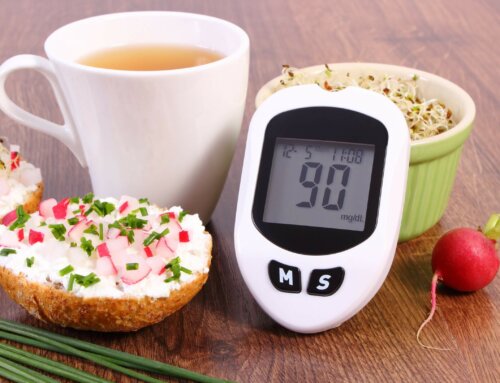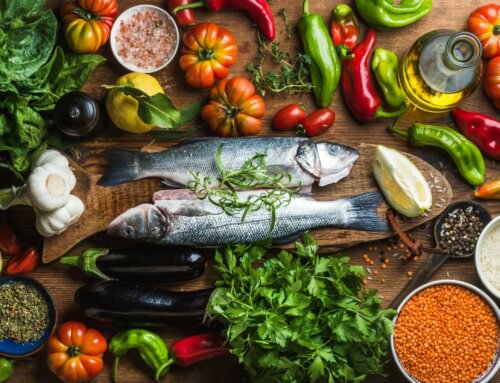Foods that are high in fiber are good for everyone to eat, but are especially helpful when you have diabetes. The Journal of Nutrition suggests that increasing daily fiber is associated with decreased body fat especially around the middle; stomach or middle fat is highly connected to insulin resistance, a problem with type 2 diabetes.
Fiber is a component of carbohydrate found in plants: fruits, vegetables, grains or legumes; legumes include beans, lentils, and peas. Fiber is the part of the plant that the body does not use, digest or absorb. You should strive to include between 20-35 grams of fiber a day; the average American’s intake is 12 grams a day. The many benefits of fiber include:
- It helps decrease the bad cholesterol-LDL, in your blood since it carries cholesterol out of the body.
- It helps to decrease the triglycerides in your blood.
- It can assist in long term weight control.
- It can help decrease fat and sugar absorption from eaten foods.
- Fiber over 5 grams can be deducted from the total carbohydrate content of a food.
- It keeps you satiated longer and can reduce the cycle of over-eating.
- It can reduce the risk of stroke and cardiovascular disease.
- It helps burn calories – especially when you take in the upper recommended amount of 30-35 grams a day.
- It can reduce the risk of diverticulitis and possible colon cancer.
- Fiber, especially soluble, delays the entry of sugar into the bloodstream which can decrease the peak blood sugar after a meal.
- It requires more chewing and makes the meal last longer.
- Fiber foods tend to have fewer calories based on its food density.
- Fiber foods may even protect against dementia.
- It may reduce the risk of breast cancer.
Try to include these high fiber diabetes friendly foods for their awesome benefits; many more can certainly be added to this list, but this is a great place to start!
- Avocados – 17 grams of carbohydrate and 11 grams of fiber per serving. It is heart healthy monounsaturated fat; avocados are high in calories so watch portion size. Chop into a salad or add to a sandwich.
- Artichokes – 14 grams of carbohydrate and 10 grams of fiber. They contain lots of Vitamin C, potassium and magnesium which have an effect on blood pressure. Steam or grill and add a bit of olive oil and lemon.
- Berries (raspberries & blackberries) – 15 grams of carbohydrate and 8 grams of fiber. Serving size is 1/2 a cup. The berries are low calorie and the dark color (phytochemical) increases immunity. They contain anti-oxidants, anthocyanins and ellagic acid. Bramble fruits (thorny plants) are also high in vitamin C.
- Apples & Pears – 20 grams of carbohydrate and 5 grams of fiber. Always wash and include the skin of these fruits to get all the fiber, vitamins and minerals. Winter fruits are great for people with diabetes. Eat whole, add to salads or cereal.
- Lentils – 10 carbohydrates and 8 grams of fiber for 1/2 cup serving. Grown in pods, they are high in protein and can substitute for a meatless meal. Combine with brown or wild rice and chopped vegetables for a complete meal. Contains B vitamins and folate.
- Almonds – a 1 ounce serving is 6 grams of carbohydrate and 3-5 grams of fiber. They contain potassium and magnesium, omega-3 fatty acids and are a good source of protein. Studies have shown that eating a serving before a large meal can blunt the post-prandial blood sugar. They are high in calories, so watch portion size. Add to cereal, salads or out of the can.
- Oatmeal – old fashioned or steel cut oats are the best choice; buy the slow cook variety if you have time. It contains 20-25 grams of carbohydrate per serving size and 6 grams of soluble fiber. It contains multiple minerals and vitamins and magnesium which may help the body use glucose better. A great start to the morning – eat with protein.
Remember when you add fiber to your diet, do so slowly or you may experience gas, bloating and diarrhea. You need to increase your water intake as well, which helps the fiber stay soft and move through you easily. Try to rely on the many food sources of fiber and limit the amount of fiber supplements you take. Take advantage of frozen or fresh vegetables and bulk up your soups, sauces and stews while increasing the fiber! Enjoy!
NOTE: Consult your doctor first to make sure my recommendations fit your special health needs.












Leave A Comment